Your pelvic floor muscles are to your body what a structural frame is to your house: foundational.
Spanning from hip-to-hip and back-to-front, the pelvic floor muscles are a flexible sling of muscles that support your reproductive and excretory organs, says Kandis Daroski, a physical therapist. This includes your bladder, bowels, rectum, and uterus (if you have one).
Healthy pelvic floor muscles also support sexual arousal and orgasms, says Daroski. And as part of your core, these muscles help protect your spine and support overall balance, she says.
Just like the other muscles in your body, your pelvic floor can weaken as a result of misuse or overuse, says Corey Silbert, a pelvic floor therapist. Also, pregnancy, menopause, obesity, chronic constipation, even improper form while lifting can injure these muscles. As a result, your pelvic floor may be unable to relax, contract, or move with coordination.
Why Is Your Pelvic Floor Important?
Pelvic floor dysfunction is typically marked by symptoms such as penetration pain; pelvic, abdominal or rectal pain; persistent constipation; erectile dysfunction; and bladder or bowel leakage, says Daroski. All of which can negatively impact your quality of life.
However, dedicating just a few minutes a day to these critical muscles can support their overall health. Pelvic floor dysfunction can be treated through a combination of physical therapy, biofeedback, medication—and yoga.
That’s right, yoga. “Yoga can greatly benefit any individual with pelvic floor dysfunction,” Daroski says. It gives individuals the opportunity to intentionally contract or relax their pelvic floor, as well as coordinate pelvic floor movements to their breath, she says.
The same stress-relief that a yoga practice brings to your thoughts can also help release pelvic floor tension. Stress is a known factor in the development of tension in muscle groups, including your pelvic floor, says Julia Connolly, an orthopedic and pelvic health physical therapist. When your pelvic floor muscles become tense, it can create pain and even exacerbate pelvic floor dysfunction and the symptoms associated with it, she says.
Can You Prevent Pelvic-Floor Dysfunction?
Not exactly. The pelvic floor is a complicated muscle structure that is impacted by your physical actions as well as your emotions and thoughts. While the addition of a regular yoga practice may be beneficial for your pelvic floor, it alone cannot prevent pelvic floor dysfunction.
Yoga can be a helpful component of your pelvic floor dysfunction treatment plan. However, if you’re experiencing any of the symptoms of pelvic floor dysfunction, your first step should be to head to a , Connolly says. Most pelvic floor health treatment plans require a handful of habit changes, she says, which an expert can walk you through.
“Treatment is individualized and will depend on your exact pelvic floor dysfunction,” Connolly says. And it often includes yoga.
The 5 Best Yoga Poses for Your Pelvic-Floor Muscles
Whether you turn to a more active or restorative yoga practice will depend on your condition, Connolly says. The following five poses are commonly recommended by Daroski and Connolly for preventing and treating pelvic floor dysfunction.
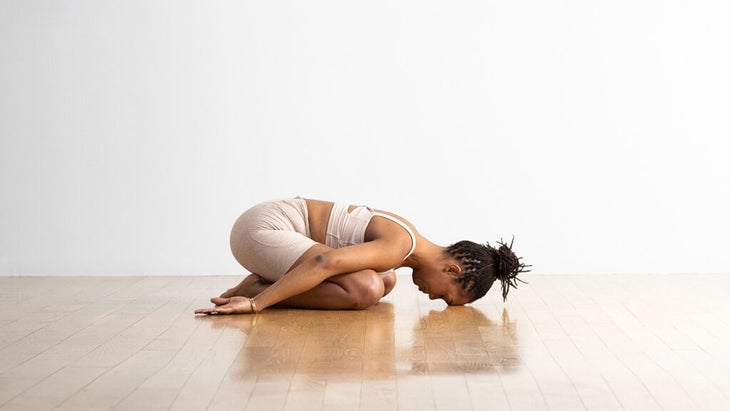
1. Balasana (Child’s Pose)
A resting position, Child’s Pose can be beneficial if you have overactive or non-relaxing pelvic floor muscles, says Daroski.
If you aren’t experiencing knee pain, try experimenting with a wide-legged Child’s Pose to give a gentle stretch to your pelvic floor. You can place a folded blanket or towel under your knees for extra cushioning.
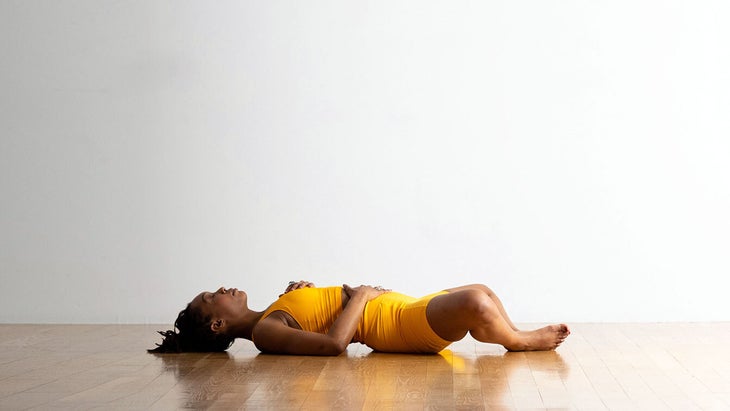
2. Supta Baddha Konasana (Reclining Bound Angle Pose)
Reclining Bound Angle Pose can help stretch the muscles and fascia in the perineum region, the area between the genitals and the anus, Connolly says.
The pose also helps soothe the vagus nerve, which is responsible for the fight, flight, or freeze response, she says. Calming your autonomic nervous system can help reduce involuntary pelvic muscle contractions that can occur in response to a perceived threat, she says, which can be anything from an email ping from a boss to a bear in the woods.
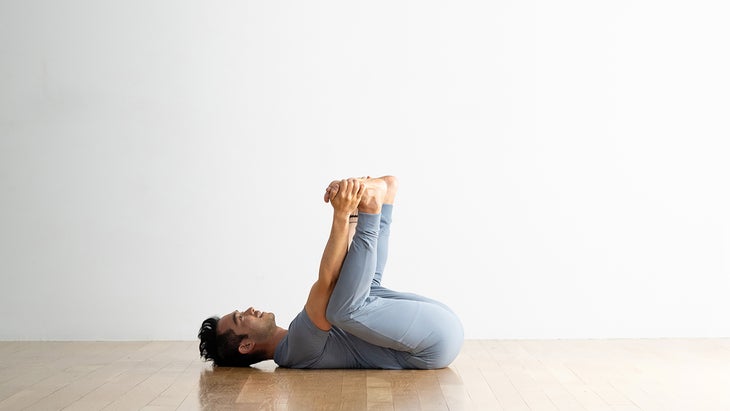
3. Ananda Balasana (Happy Baby Pose)
This pose stretches the inner thigh muscles connected with the pelvic floor, Daroski says. When paired with controlled belly breathing, this position can teach you how to relax those muscles. You can also practice a variation of this posture, Half Happy Baby Pose, by raising one leg at a time.
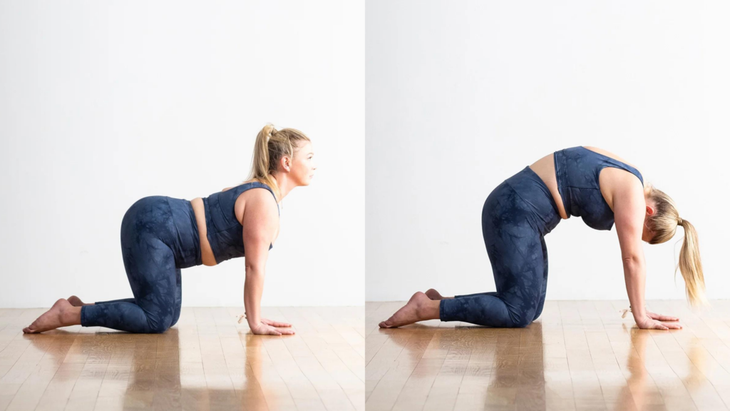
4. Marjaryasana (Cat Pose) and Bitilasana (Cow Pose)
You may be familiar with the relief this stretch offers your spine, but it can also benefit your pelvic floor. These two poses improve symptoms associated with urinary leakage, urgency, and frequency, as well as pelvic pain, Daroski says.
“They help improve your lumbopelvic rhythm, the coordination between your low back and your pelvis, as well as provide mobilization to the thoracic spine,” she says. Since the pelvic floor connects to all of these areas, keeping them mobile is vital, she says.
Practice and
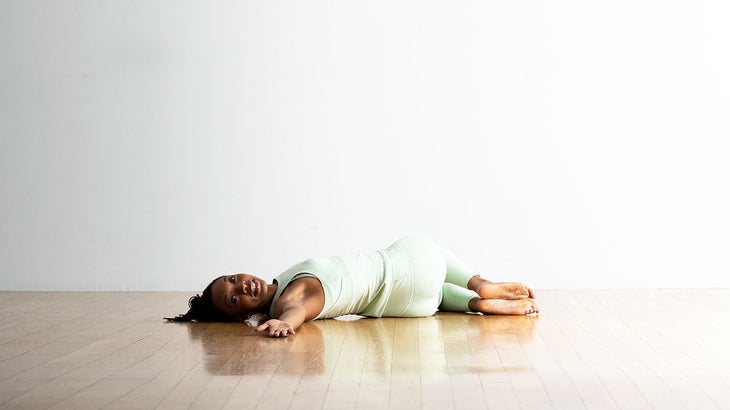
5. Supta Matsyendrasana (Reclining Twist)
“Reclining Twist is a gentle way to invite length and stretch to the connective tissue that surrounds your lumbar spine, sacrum, and abdominal wall,” Connolly says. When these tissues get stiff, it can contribute to pelvic tightness, she says. However, when they loosen, you can regain mobility in your pelvic floor.


